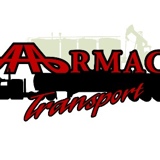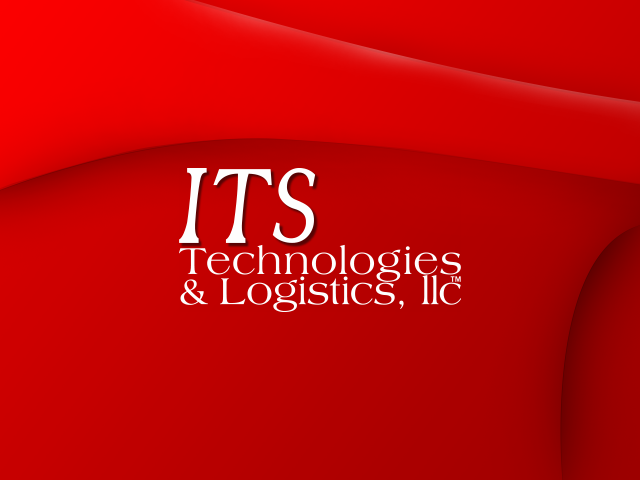Information
-
Safety and Regulatory Compliance Department Internal Audit Report
-
Location Code:
-
Inspection Date:
-
Auditor:
- Christopher Bunn-Toves, OSHA Manager, Corporate Safety
- Ellen Dolinar, Sr Manager, Corporate Safety
-
Debriefed (Name and Title):
-
Response Due By:
OSHA - General
-
Are work spaces and walking-working surfaces are kept clean, dry, and free of hazards?<br>1910.22(a)(1) through (a)(3)
-
Are employees in work areas, 4 or more feet above a lower level, protected from falling?<br>1910.28(b)(1)(i)(A) through (b)(1)(ii)(C)
-
Is material piled, stacked, or racked in a manner to prevent it from tipping, falling, collapsing, or rolling?<br>1910.176(b)
-
Are nose stands and scissor lifts free of debris?<br>1910.22(a)(1)
Employer Posting and Manuals
-
Is the appropriate OSHA workplace poster displayed in a prominent location?<br>1903.2(a)(1)
-
Have SDS posters/phone stickers been properly posted?<br>1910.1200(g)(8)
-
Are employees able to secure an SDS on short notice for the following product?<br>1910.1200(g)(8) and 1910.1200(h)(2)(iii), (h)(3)(iv)
-
Do associates know what procedures should be taken in the event of a spill/exposure?<br>1910.1200(h)(3)(iv)
-
Are Bomb Threat Procedure Cards legible and readily accessible near each telephone? SAFE Ch 11
Medical Services and First Aid
-
Are first aid kits easily accessible to each work area?<br>1910.151(b)
-
Are means provided for quick cleaning or flushing of the eyes and body in areas where corrosive liquids or materials are handled?<br>1910.151(c)
-
Are plumbed emergency eyewash/shower stations available and inspected/activated weekly? Tank style eyewash inspected monthly?<br>ANSI Z358.1 - 2009
Fire Protection and Clearance
-
Are portable fire extinguishers provided in adequate number and type?<br>1910.157(d)
-
Are fire extinguishers visually inspected monthly?<br>1910.157(e)(2)
-
Do fire extinguishers receive an annual maintenance check and are these checks documented?<br>1910.157(e)(3)
-
Are portable fire extinguishers mounted, located and identified so that they are readily accessible to associates?<br>1910.157(c)(1)
-
Are portable fire extinguishers properly charged, operable and kept in their designated places except during use?<br>1910.157(c)(4)
-
Are adequate fire extinguishers available for immediate use in a battery area?<br>1910.157(d)(1) and 1910.252(a)(2)(ii)
-
Is proper clearance maintained below sprinkler heads (18")?<br>1910.159(c)(10)
-
Are fire alarm actuation devices unobstructed, identified and readily accessible?<br> 1910.165(e)
-
Is sufficient diffusion and ventilation provided to prevent the accumulation of explosive gases where batteries are stored?<br>1910.305(j)(7)
Fork Lifts/Aerial Lifts/Scissor Lifts/Nose Stands
-
Are forklifts equipped with horn, overhead guard, and nameplate (load limits)?<br>1910.178(a)(6), 1910.178(e)(1), and 1910.178(m)(9)
-
Are forklift daily Pre-Start Inspection logs kept on file?<br>1910.178(q)(7) and SAFE Appendix F
-
Are scissor lift and/or nose stand daily Pre-Start Inspection logs kept on file?<br>1910.269(p)(1)(i), SAFE Appendix E, and 1926.451(f)(3)
-
Monthly Inspections for aerial lifts?<br>1910.68(e)(1) and SAFE Appendix E
-
Annual Inspections for aerial lifts?<br>SAFE Appendix E
Means of Egress
-
Are doorways that could be mistaken for an exit properly marked?<br>1910.37(b)(5)
-
Are doors which are required to serve as exits designed and constructed so that the way of exit travel is obvious and direct?<br>1910.36
-
Is adequate headroom provided for the entire length of any exit route 7'6" and any projection from the ceiling not below 6'8"?<br>1910.36(g)(1)
-
Are exit routes free and unobstructed?<br> 1910.37(a)(3)
-
Are exit routes 28 inches wide?<br>1910.36(g)(2)
-
Are exits properly marked?<br> 1910.37(b)(2)
-
Are directions to exits, when not immediately apparent, marked with visible illuminated signs, when required?<br>1910.37(b)(4)
-
Can exit doors be opened from the direction of exit travel without the use of key or any special knowledge or effort?<br>1910.36(d)(1)
Personal Protective Equipment
-
Is approved hearing protection available to every employee working in noisy areas? (Noise above 85dba)<br>1910.95(i)(1)
-
Is all protective equipment maintained in a safe condition and ready for use? (i.e., fall protection, face shields, safety glasses)<br>1910.132(a) and SAFE Ch 14
-
Are safety glasses always worn in areas where there is a risk of eye injuries from flying particles, liquid chemicals, acids or caustic liquids, chemical gases or vapors, or potentially injurious light radiation?<br>1910.133(a)(1) and SAFE Ch 15
-
Seat-belts are used when provided? SAFE Ch 15
-
Fall Protection Harness Annual Inspection?<br>Mfg. Requirements and SAFE Appendix E
-
Fall Protection - Lanyard - Annual Inspection<br>Mfg. Requirements and SAFE Appendix E
-
Fall Protection - Personal Fall Limiter - Annual Inspection<br>Mfg. Requirements and SAFE Appendix E
Portable Ladders
-
Ladders are inspected for visible defects on an annual basis with the inspection tag completed and attached to the ladder? SAFE Appendix D
-
Any ladder with structural or other defects is immediately tagged "Dangerous: Do Not Use" or with similar language and removed from service until repaired in accordance or replaced?<br>1910.23(b)(10)
-
Are non-slip feet in good working order?<br>SAFE Appendix D
-
Are ladder steps free of grease and oil?<br>SAFE Appendix D
Electrical
-
Are flexible extension cords and cables free of splices or tape?<br>1910.334(a)(2)(ii)
-
Are all cord and cable connections intact and secure on electrical equipment?<br>1910.334(a)(3)(i)
-
Are switches, receptacles, etc. provided with tight fitting covers or plates?<br>1910.305(b)(2)
-
Do electrical panels have a 30-inch clearance (buildings prior to '81) 36-inch clearance (buildings after '81)?<br>1910.303(g)(1)(i)
Machine Guarding
-
Are all rotating or moving parts of equipment properly guarded to prevent physical contact?<br>1910.212(a)(1)
-
Are pedestal grinders adjusted properly (tool rest 1/8" & tongue 1/4")?<br>1910.215(a)(4) and 1910.215(b)(9)
-
Is equipment securely placed and anchored, when necessary to prevent tipping or other movement that could result in personal injury?<br>1910.212(b)
-
Are emergency stop buttons red?<br>1910.144(a)(1)(iii)
HAZCOM
-
Flammable bulk dispensing container have bonding wires for spouts and nozzles.<br>1910.106(e)(6)(ii) and NFPA 30,18.4.4.1(4)
-
Are flammable liquids segregated from incompatibles (i.e., oxidizers, acids and caustics) by a minimum of 25'?<br>30 NFPA 9.17.3 and SAFE Ch 15
-
Approved safety cans are utilized for storing diesel & gasoline fuels.<br>1910.106(d)(2)
-
Approved metal receptacles are used for combustible waste materials prior to disposal.<br>1910.106(e)(9)(iii)
-
Waste, oily rags, and other flammable material are stored in fireproof receptacles provided for that purpose and not on tool boxes or benches? <br>SAFE Ch 15
-
Spill Clean-up kits or materials are provided to contain leaks & spills.<br>1910.106(e)(2)(iv)(b)
-
Gas storage cylinders are identified as to content.<br>1910.253(b)(1)(ii)
-
Gas cylinders are secured, caged or on dollies.<br>1910.101(b)
-
Oxygen cylinders are segregated from Flammables by at least 20 ft.<br>1910.253(b)(4)(iii)
-
Gas cylinders are capped when not in use.<br>1910.253(b)(2)(iv)
-
Flammable gas cylinder storage area is placarded "NO SMOKING".<br>1910.104(b)(8)(viii)
-
Cylinder valves shall be closed when work is finished. <br>1910.253(b)(5)(ii)(G)
-
Secondary storage containers with chemicals are legibly labeled, tagged or marked with contents and hazards when not in immediate use.<br>1910.1200(f)(5)
-
Flammable cabinets in good condition with doors secured when not being used.<br>1910.106(d)(3)
-
All flammable cabinets labeled, "Flammable-Keep Fire Away".<br>1910.106(d)(3)(ii)
-
Flammable cabinets clear of any top storage.<br>OSHA General Duty Clause [Section 5(a)(1)]
Training Records
-
Employees using fall protection and aerial lifts have received site-specific training?
-
Employees using scissor lifts and nose stands have received site-specific training?<br>
-
Employees using powered industrial trucks have received on-site powered industrial truck training and a forklift operator evaluation?<br>1910.178(i) and SAFE Appendix F
Facility Emergency Equipment Inspections
-
Fire Alarm
-
Fire Suppression system/Sprinkler system
-
Emergency Lighting
-
Evacuation Drill
-
Date Completed:
-
Severe Weather Drill
-
Date Completed:
General Observations
-
Add media










